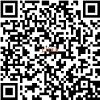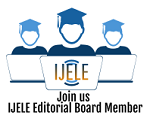(2) Talha Akber
(3) Marwa Werghemmi
(4) Iman Ashraf
(5) Mona Azahra
(6) Ni Putu Eka Budi P.W.D
(7) Qazi Muhammad Zulqurnain Ul Haq
*corresponding author
AbstractAs global interconnectedness increases, the demand for high-quality bilingual education and by extension, well-prepared bilingual educators, has grown significantly. This systematic review investigates global trends and challenges in bilingual teacher education across diverse sociocultural contexts. A total of 68 peer-reviewed studies published between 2005 and 2022 were analyzed using Saldaña’s coding method, with data sourced from six major databases and selected through PRISMA guidelines. Thematic analysis revealed six core areas: global research trends in teacher preparation, evolving teacher competencies, identity formation and intercultural competence, pedagogical models, language policy, and implementation challenges. Findings show that successful bilingual teacher preparation programs are supported by culturally responsive pedagogy, robust policy alignment, and sustained professional development. However, disparities persist due to inadequate training infrastructure, restrictive policies, and lack of localized resources especially in underrepresented regions. The review underscores the need for teacher education models that are context-sensitive, equity-driven, and globally informed. It calls for expanded research in the Global South, integrative policy frameworks, and institutional commitment to build a resilient, inclusive bilingual teaching workforce.
KeywordsBilingual education; education; teaching and learning
|
DOIhttps://doi.org/10.31763/ijele.v7i1.1700 |
Article metrics10.31763/ijele.v7i1.1700 Abstract views : 237 | PDF views : 32 | PDF views : 139 |
Cite |
Full Text Download Download
Full Text Download Download
|
References
[1] P. Pietrzyk-Kowalec, “Foreign Languages and Employability in the European Union,†Int. Sch. Sci. Res. Innov., vol. 17, no. 6, pp. 411–414, 2023.
[2] J. Fox, Regression diagnostics: An introduction. Sage publications, 2019.
[3] M. S. Schwartz, “Ethical Decision-Making Theory: An Integrated Approach,†J. Bus. Ethics, vol. 139, no. 4, pp. 755–776, Dec. 2016, doi: 10.1007/s10551-015-2886-8.
[4] B. Ozfidan and M. Toprak, “Cultural Awareness on A Bilingual Education: A Mixed Method Study,†Multicult. Learn. Teach., vol. 15, no. 1, Jan. 2020, doi: 10.1515/mlt-2017-0019.
[5] C. Alfaro, “The sociopolitical struggle and promise of bilingual teacher education: Past, present, and future,†Biling. Res. J., vol. 41, no. 4, pp. 413–427, Oct. 2018, doi: 10.1080/15235882.2018.1540367.
[6] J. Parkes, T. Ruth, M. Anberg-Espinoza, and E. De Jong, “Urgent research questions and issues in dual language education,†Dual Language Education of New Mexico. pp. 5–58, 2009.
[7] N. Hernandez-Nanclares and A. Jimenez-Munoz, “English as a medium of instruction: evidence for language and content targets in bilingual education in economics,†Int. J. Biling. Educ. Biling., vol. 20, no. 7, pp. 883–896, Nov. 2017, doi: 10.1080/13670050.2015.1125847.
[8] O. GarcÃa, “En/countering Indigenous Bilingualism,†J. Lang. Identity Educ., vol. 8, no. 5, pp. 376–380, Oct. 2009, doi: 10.1080/15348450903305155.
[9] M. Källkvist and F. M. Hult, “Discursive mechanisms and human agency in language policy formation: negotiating bilingualism and parallel language use at a Swedish university,†Int. J. Biling. Educ. Biling., vol. 19, no. 1, pp. 1–17, Jan. 2016, doi: 10.1080/13670050.2014.956044.
[10] K. A. King and A. Mackey, “Research Methodology in Second Language Studies: Trends, Concerns, and New Directions,†Mod. Lang. J., vol. 100, no. S1, pp. 209–227, Jan. 2016, doi: 10.1111/modl.12309.
[11] M. Cioè-Peña, “The intersectional gap: how bilingual students in the United States are excluded from inclusion,†Int. J. Incl. Educ., vol. 21, no. 9, pp. 906–919, Sep. 2017, doi: 10.1080/13603116.2017.1296032.
[12] M. Tight, “The neoliberal turn in Higher Education,†High. Educ. Q., vol. 73, no. 3, pp. 273–284, Jul. 2019, doi: 10.1111/hequ.12197.
[13] A. Saldanha, T. Villa, R. K. Brayton, and A. L. Sangiovanni-Vincentelli, “Satisfaction of input and output encoding constraints,†IEEE Trans. Comput. Des. Integr. Circuits Syst., vol. 13, no. 5, pp. 589–602, May 1994, doi: 10.1109/43.277632.
[14] T.-H. Chien, Y.-L. Chen, J.-S. Wu, C.-Y. Siao, L.-R. Chien, and R.-G. Chang, “An Improved Method for Online Teacher Training Courses for Bilingual Education Based on Cyber-Physical Systems,†Appl. Sci., vol. 12, no. 5, p. 2346, Feb. 2022, doi: 10.3390/app12052346.
[15] B. KordÃková and B. Brestenská, “Bilingual science education: perceptions of Slovak in-service and pre-service teachers,†J. Biling. Educ. 2020, doi: 10.1080/13670050.2020.1718590.
[16] F. J. M. Gutiérrez and I. G. López, “Uncovering Teachers’ Needs in the Quest for Quality Bilingual Education,†J. Lang. Teach. Res., vol. 14, no. 4, pp. 1065–1072, Jul. 2023, doi: 10.17507/jltr.1404.25.
[17] Q. Deng, L. K. Kiramba, and K. M. Viesca, “Factors Associated With Novice General Education Teachers’ Preparedness to Work With Multilingual Learners: A Multilevel Study,†J. Teach. Educ., vol. 72, no. 4, pp. 489–503, Sep. 2021, doi: 10.1177/0022487120971590.
[18] C. E. Zúñiga, “Supporting ‘pedagogical’ Spanish language competencies,†Teach. Educ. Q., vol. 46, no. 3, pp. 79–98, 2019.
[19] C. R. Aquino-Sterling and F. RodrÃguez-Valls, “Developing Teaching-Specific Spanish Competencies in Bilingual Teacher Education: Toward a Culturally, Linguistically, and Professionally Relevant Approach,†Multicult. Perspect., vol. 18, no. 2, pp. 73–81, Apr. 2016, doi: 10.1080/15210960.2016.1152894.
[20] S. E. L. Terra, “Bilingual education in Mozambique: a case-study on educational policy, teacher beliefs, and implemented practices,†Int. J. Biling. Educ. Biling., vol. 24, no. 1, pp. 16–30, Jan. 2021, doi: 10.1080/13670050.2018.1441803.
[21] C. Benson and P. Plüddemann, “Empowerment of bilingual education professionals: the training of trainers programme for educators in multilingual settings in southern Africa (ToTSA) 2002–2005,†Int. J. Biling. Educ. Biling., vol. 13, no. 3, pp. 371–394, May 2010, doi: 10.1080/13670050903373899.
[22] P. Wang and S. B. Woolf, “Trends and issues in bilingual special education teacher preparation: A literature review,†J. Multiling. Educ. Res., vol. 6, no. 1, p. 4, 2015.
[23] A. Ali, “Prospects and Challenges of Dynamic Bilingual Education in the Light of Pakistan’s Language Policy,†IARS Int. Res. J., vol. 10, no. 2, Aug. 2020, doi: 10.51611/iars.irj.v10i2.2020.126.
[24] J. C. Evans, H. Yip, K. Chan, C. Armatas, and A. Tse, “Blended learning in higher education: professional development in a Hong Kong university,†High. Educ. Res. Dev., vol. 39, no. 4, pp. 643–656, Jun. 2020, doi: 10.1080/07294360.2019.1685943.
[25] R. Swanwick, “Policy and practice in sign bilingual education: development, challenges and directions,†Int. J. Biling. Educ. Biling., vol. 13, no. 2, pp. 147–158, Mar. 2010, doi: 10.1080/13670050903474069.
[26] P. Cabezuelo Gutierrez and R. Fernández Fernández, “A case study on teacher training needs in the Madrid bilingual project,†Lat. Am. J. Content Lang. Integr. Learn., vol. 7, no. 2, pp. 49–70, Oct. 2014, doi: 10.5294/laclil.2014.7.2.3.
[27] B. Olsen and R. Buchanan, “‘Everyone wants you to do everything’: Investigating the professional identity development of teacher educators,†Teach. Educ. Q., vol. 44, no. 1, pp. 9–34, 2017.
[28] M. L. Pérez Cañado, “Teacher training needs for bilingual education: in-service teacher perceptions,†Int. J. Biling. Educ. Biling., vol. 19, no. 3, pp. 266–295, May 2016, doi: 10.1080/13670050.2014.980778.
[29] D. Xerri, “Teaching English in a Multilingual Classroom: Addressing Challenges Through Teacher Education and Development,†in Multilingual education, 2018, pp. 143–153. doi: 10.1007/978-3-319-92396-3_8
[30] M. E. Ottogalli and G. M. A. Bermudez, “A PCK-mapping approach to show the integration among components of the pedagogical content knowledge of elementary education teacher educators about biodiversity,†Teach. Teach. Educ., vol. 151, p. 104746, Dec. 2024, doi: 10.1016/j.tate.2024.104746.
[31] E. Garza, K. Espinoza, M. Machado-Casas, B. Schouten, and M. J. Guerra, “Highly Effective Practices of Three Bilingual Teacher Preparation Programs in US Hispanic-Serving Institutions (HSIs),†Ehquidad Rev. Int. PolÃticas Bienestar y Trab. Soc., no. 14, pp. 95–128, Jul. 2020, doi: 10.15257/ehquidad.2020.0014.
[32] L. Scherzinger and T. Brahm, “A systematic review of bilingual education teachers’ competences,†Educ. Res. Rev., vol. 39, p. 100531, May 2023, doi: 10.1016/j.edurev.2023.100531.
[33] U. Doleschal, “Good practices of bilingual education in the CoE countries.†Ursula Doleschal, University of Klagenfurt, Austria, pp. 1–11, 2020.
[34] O. Lundberg, “Obstacles to bilingual education,†Apples - J. Appl. Lang. Stud., vol. 11, no. 3, pp. 29–54, Oct. 2017, doi: 10.17011/apples/urn.201712104583.
[35] K. Menken and C. Solorza, “Principals as linchpins in bilingual education: the need for prepared school leaders,†Int. J. Biling. Educ. Biling., vol. 18, no. 6, pp. 676–697, Nov. 2015, doi: 10.1080/13670050.2014.937390.
[36] J. Butcher, I. Sinka, and G. Troman, “Exploring diversity: teacher education policy and bilingualism,†Res. Pap. Educ., vol. 22, no. 4, pp. 483–501, Dec. 2007, doi: 10.1080/02671520701651102.
[37] N. Fauziah, S. Mirizon, and S. Silvhiany, “Bilingual Education Program: Teachers’ and Students' Perspectives and Challenges,†J. Pendidik. Progresif, vol. 11, no. 2, pp. 219–234, 2021, doi: 10.23960/jpp.v11.i2.202107.
[38] K. Ma, “The Challenges and Solutions in Bilingual Education,†Lect. Notes Educ. Psychol. Public Media, vol. 24, no. 1, pp. 242–248, Nov. 2023, doi: 10.54254/2753-7048/24/20230740.
Refbacks
- There are currently no refbacks.
Copyright (c) 2025 Tryanti Ridwan Abdulrahman

This work is licensed under a Creative Commons Attribution-ShareAlike 4.0 International License.

International Journal of Education and Learning
ISSNÂ 2684-9240
Published by Association for Scientific Computing Electronics and Engineering (ASCEE)
W : http://pubs2.ascee.org/index.php/ijele
E : zalik@ascee.org

This work is licensed under a Creative Commons Attribution-ShareAlike 4.0 International License.






















